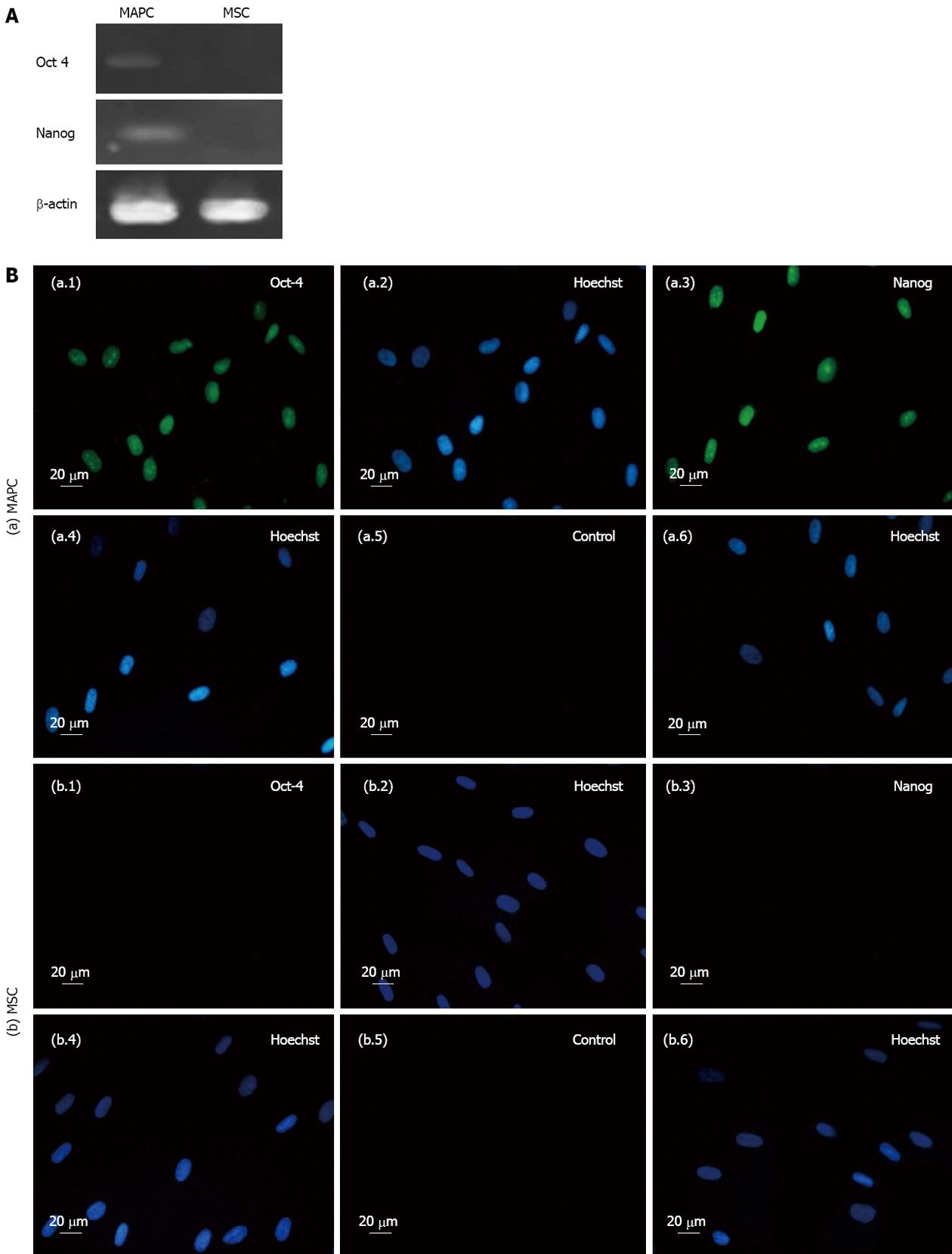Copyright
©2013 Baishideng Publishing Group Co.
World J Stem Cells. Apr 26, 2013; 5(2): 53-60
Published online Apr 26, 2013. doi: 10.4252/wjsc.v5.i2.53
Published online Apr 26, 2013. doi: 10.4252/wjsc.v5.i2.53
Figure 2 Expression of embryonic markers by multipotent adult progenitor cells and by mesenchymal stem cells.
A: Expression of Oct-4 and Nanog genes in multipotent adult progenitor cells (MAPC) and no expression of these genes in mesenchymal stem cells (MSC) as revealed by reverse-transcription polymerase chain reaction. β-actin represents the house keeping gene; B: Representative Immunocytochemistry photomicrographs (×40, 20 μm) of (a) MAPC showing fluorescein isothiocyanate (FITC) and Hoechst staining for Oct-4 (a.1 and a.2, respectively), Nanog (a.3 and a.4, respectively) and of controls, i.e., cells with no primary antibody (a.5 and a.6, respectively); and (b) MSC showing FITC and Hoechst staining for Oct-4 (b.1 and b.2, respectively) and Nanog (b.3 and b.4, respectively) and of controls, i.e., cells with no primary antibody (b.5 and b.6, respectively).
- Citation: Singh SP, Tripathy NK, Nityanand S. Comparison of phenotypic markers and neural differentiation potential of multipotent adult progenitor cells and mesenchymal stem cells. World J Stem Cells 2013; 5(2): 53-60
- URL: https://www.wjgnet.com/1948-0210/full/v5/i2/53.htm
- DOI: https://dx.doi.org/10.4252/wjsc.v5.i2.53









